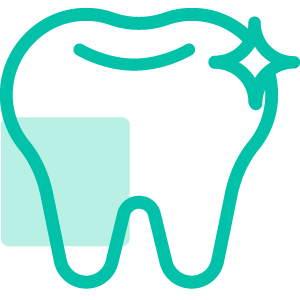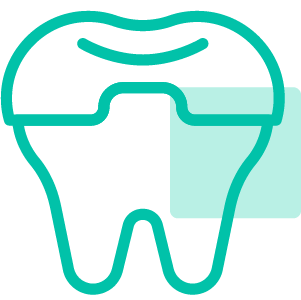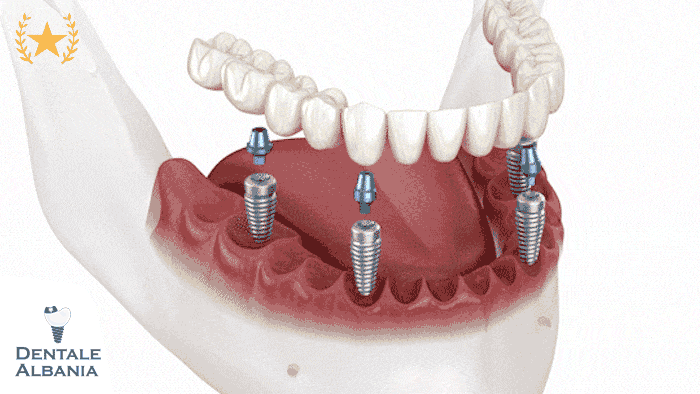Table of Contents
ToggleWhat Is Teeth Whitening and How Does It Work?

Everyone desires a radiant, bright smile, and teeth whitening is one of the most popular cosmetic dental treatments sought by people looking to boost their confidence. Teeth whitening, also known as tooth bleaching, is a dental procedure designed to lighten the natural shade of your teeth, remove discoloration, and provide you with visibly whiter teeth. But what exactly is teeth whitening, and how does it deliver such impressive results?
Teeth whitening typically involves the application of specific bleaching agents—most commonly hydrogen peroxide or carbamide peroxide—which penetrate the enamel surface and break down stain molecules. These peroxide-based agents act as powerful oxidizers, working deep within the enamel to dissolve intrinsic stains (those within the tooth structure) and extrinsic stains (surface discolorations). When applied, the peroxide molecules generate free radicals that interact with the pigment molecules embedded in the enamel, effectively breaking them down into smaller, less visible components. This chemical reaction results in significantly lighter and brighter teeth.
Understanding the different types of stains is crucial for effective teeth whitening. Extrinsic stains occur on the tooth’s surface, primarily caused by lifestyle factors such as consuming stain-causing foods and beverages—like coffee, tea, red wine, and curries—as well as habits like smoking or chewing tobacco. These external stains respond very well to most teeth whitening methods, as they are easier to break down and remove.
Intrinsic stains, on the other hand, are located deeper within the tooth and can result from factors such as aging, genetic conditions, trauma, or prolonged exposure to fluoride or certain medications like tetracycline antibiotics during tooth development. Intrinsic stains are often more challenging to treat and typically require stronger bleaching agents and longer treatment durations. In some severe cases, alternative cosmetic treatments like dental veneers or bonding might be necessary to achieve the desired whitening results.
Professional whitening procedures performed by dental practitioners utilize higher concentrations of bleaching agents than over-the-counter products, offering rapid and more noticeable results. Whether you’re choosing a professional treatment or at-home methods, teeth whitening remains a safe, proven way to dramatically enhance your smile’s appearance.
What Are the Best Ways to Whiten Your Teeth?
Is Professional Teeth Whitening at the Dentist Worth It?
When aiming for significantly whiter teeth, professional teeth whitening by dentists is often the best route. Dentists offer advanced treatments such as laser whitening and customized bleaching trays, ensuring safe and highly effective results.
In-office procedures, including laser whitening, involve applying high-concentration hydrogen peroxide gel to the teeth and activating it with specialized laser or LED lights. These treatments typically produce immediate, visible results within just a single appointment—often in less than one hour. Professional bleaching trays, which are custom-made to fit your teeth, also deliver excellent whitening outcomes but typically take a few weeks of consistent use at home.
Though more expensive compared to DIY or at-home methods, professional dental whitening provides superior results with reduced risks. Treatment costs at dental clinics in the UK usually range between £200 and £600, depending on the method used and the clinic’s location. However, these treatments are often worth the investment, providing long-lasting results and minimizing the common side effects associated with less supervised methods, such as increased tooth sensitivity or gum irritation.
Do At-Home Teeth Whitening Kits Work?
At-home teeth whitening kits, including whitening strips, LED-activated kits, and gel trays, are popular due to their affordability and convenience. These products typically use lower concentrations of bleaching agents compared to professional treatments but can still effectively whiten teeth over a period of use, usually between two weeks to one month.
Whitening strips are straightforward and easy to use, involving thin plastic strips coated with a peroxide-based gel that you apply directly to the teeth. LED kits combine gel trays with blue LED lights, intended to accelerate the bleaching process and provide more noticeable results.
While these kits are cost-effective, generally priced between £20 to £80, they might not match the rapid and dramatic results of professional whitening. Additionally, misuse or prolonged use may lead to increased sensitivity or irritation. For best results, dentists recommend selecting kits from reputable brands or those recommended by dental professionals.
Can Natural Remedies Whiten Teeth Effectively?
Natural remedies like baking soda, coconut oil pulling, or using hydrogen peroxide at low concentrations have gained popularity as inexpensive ways to whiten teeth at home. Baking soda is a mild abrasive that gently removes surface stains when used regularly. Coconut oil pulling, involving swishing oil around the mouth, claims to remove bacteria and superficial stains, although its effectiveness in whitening teeth remains anecdotal.
While hydrogen peroxide is indeed an effective bleaching agent, using it improperly or at too high a concentration without professional guidance can harm tooth enamel and gums. Scientific studies on natural teeth whitening methods show mixed results. Although some methods may mildly brighten teeth by removing extrinsic stains, they rarely affect intrinsic stains deeply embedded within enamel.
It’s crucial to approach natural remedies cautiously, as they can pose risks such as enamel erosion if misused. Consulting your dentist before attempting these DIY methods can help ensure safe and effective results.
Can Yellow Teeth Be White Again?
If you’re wondering whether yellow teeth can be white again, the answer is typically yes, although results may vary depending on several factors. Teeth naturally yellow over time due to aging, lifestyle habits, dietary choices, and even genetics. This yellowing occurs primarily as the enamel becomes thinner, allowing the underlying dentin—which is naturally yellow—to show through more prominently.
Fortunately, both extrinsic and intrinsic stains responsible for teeth yellowing can often be significantly improved through various teeth whitening methods. Extrinsic stains, which sit on the tooth surface due to foods like coffee, tea, and wine, smoking habits, or poor oral hygiene, respond particularly well to teeth bleaching services. Professional dental whitening treatments, such as laser whitening or custom bleaching trays provided by dentists, are specifically effective at tackling such discoloration, offering dramatic improvements in tooth shade.
However, intrinsic stains—deeply embedded within the enamel or dentin—can be more challenging. These stains typically stem from aging, certain medications like tetracycline antibiotics, excessive fluoride exposure (fluorosis), or trauma to teeth. Teeth whitening dental procedures involving higher concentrations of hydrogen peroxide or carbamide peroxide, performed in-office, offer the most promising outcomes for these deeper discolorations. Yet, it’s essential to recognize that extremely stubborn intrinsic stains might not fully disappear, even after professional whitening. In such cases, alternative cosmetic procedures like dental veneers or bonding can be excellent solutions, giving you a bright white smile that lasts.
How Much Does Teeth Whitening Cost in the UK?

Is Teeth Whitening Covered by the NHS?
A common question for individuals in England and across the UK is whether teeth whitening treatments are covered by the NHS. Generally, NHS teeth whitening services are not provided, as tooth whitening is considered a cosmetic procedure rather than a necessary medical treatment. The NHS typically only covers dental treatments that are deemed medically essential, such as fillings, extractions, or gum disease treatments.
However, there may be exceptions if teeth whitening is considered essential for psychological or medical reasons, though this is relatively rare. Typically, patients wishing to whiten teeth must opt for private dental whitening treatment. Costs vary significantly across clinics and regions but usually range from around £200 to £600 for professional teeth whitening from a dentist in the UK.
How Much Does Teeth Whitening Cost in Albania?
If you’re considering teeth whitening treatments, Albania has become an increasingly popular destination for affordable, high-quality dental care, attracting patients from across Europe and beyond. Dental clinics in Albanian cities like Tirana, Durres, and Saranda offer a variety of teeth whitening options at significantly lower prices compared to many other European countries, including the UK and Italy.
The cost of teeth whitening in Albania varies based on several factors, including the type of treatment selected, the technology utilized, the clinic’s reputation, and the experience of the dental professionals performing the procedure. Generally speaking, teeth whitening services in Albania range from as low as €100 for simpler, at-home bleaching kits provided by dental clinics to around €400 for advanced professional in-office treatments.
Costs of Professional Teeth Whitening Treatments in Albania
Professional teeth whitening performed in dental offices is widely considered the most effective and safest method. Albanian dental clinics typically offer two main types of professional treatments: laser whitening and custom tray bleaching.
Laser Whitening:
Laser whitening, often referred to as “power whitening,” is the fastest and most efficient whitening method available. A high-concentration hydrogen peroxide gel is applied to the teeth, then activated by a laser or advanced LED light system. This process provides immediate, visible results after a single session lasting roughly one hour. Laser whitening procedures at reputable clinics in Tirana typically cost between €200 and €400, making them substantially more affordable compared to similar treatments in the UK or Italy, which often exceed €500 to €700.
Custom Tray Whitening:
This method involves creating personalized bleaching trays tailored precisely to the patient’s teeth, ensuring even and safe whitening. The trays, combined with professional-strength whitening gels, offer noticeable results within a few weeks. Custom tray whitening in Albania generally costs between €100 and €250, offering a budget-friendly yet highly effective solution.
At-Home Teeth Whitening Options in Albania
At-home whitening kits sold by dental clinics or pharmacies in Albania offer additional cost-effective solutions. These typically include lower concentrations of peroxide gel and standard trays or strips, suitable for patients seeking minor to moderate whitening improvements. Costs for at-home whitening solutions in Albania usually range between €40 to €120, depending on brand and quality.
Why Consider Albania for Teeth Whitening?
Choosing Albania for teeth whitening procedures provides multiple advantages:
-
Cost Savings: Dental care in Albania is substantially cheaper than in Western European countries, providing excellent value for money.
-
High-Quality Standards: Many Albanian dentists train abroad and are highly qualified, using state-of-the-art equipment and internationally approved techniques.
-
Dental Tourism Benefits: Combining dental care with leisure makes Albania an attractive destination. Patients often enjoy exploring scenic attractions, beaches, historic sites, and vibrant city life during their stay.
How Do Professional Whitening Costs Compare to DIY Methods?
Understanding how professional teeth whitening costs compare to DIY at-home methods can help you make an informed choice. Professional teeth whitening by dentists, including procedures like laser teeth whitening or custom-fitted dental trays, tend to be pricier, averaging between £200 to £600 depending on location and specific treatment type. The benefits, however, include immediate results, professional oversight to minimize side effects, and longer-lasting outcomes.
In comparison, at-home teeth whitening solutions such as whitening strips, LED kits, or gel trays purchased online or in stores like Boots or Amazon.co.uk typically range from £20 to £80. These low-cost teeth whitening options offer affordability and convenience but may require longer usage to achieve comparable results to professional treatments. Additionally, they carry a higher risk of side effects like gum irritation or tooth sensitivity if used incorrectly.
While DIY methods are cost-effective initially, professional teeth whitening often offers superior long-term value. Regular touch-ups or repeated purchases of at-home kits may end up equaling the cost of professional treatments over time, especially considering the longevity of results achieved professionally. Dentists often recommend professional teeth whitening as the safest, most effective, and ultimately more cost-efficient approach for those serious about maintaining bright, white teeth.
Is Teeth Whitening Safe? What Are the Risks?
Teeth whitening, whether conducted by a professional dentist or through at-home methods, is generally safe when used correctly and under proper guidance. However, many individuals are understandably concerned about potential risks, including damage to enamel, sensitivity, and effects on existing dental work. To address these concerns, let’s break down each important aspect.
Does Teeth Whitening Damage Enamel?
A prevalent myth about teeth whitening is that it significantly damages tooth enamel. Professional whitening treatments and most reputable at-home products use either hydrogen peroxide or carbamide peroxide, which safely penetrate the tooth enamel to lift and lighten stains. These substances do not erode or remove enamel when applied according to recommended guidelines. Clinical studies confirm that professional whitening, such as Philips Zoom! or dentist-prescribed trays, is safe and poses minimal risk to the tooth structure.
However, excessive use or incorrect application—particularly with high-concentration peroxide products purchased without professional guidance—can potentially weaken enamel temporarily. To protect your enamel during whitening:
- Always follow instructions provided by your dentist or product guidelines.
- Avoid prolonged exposure to strong whitening agents.
- Consider using products containing remineralizing agents or fluoride to strengthen enamel after whitening.
What Are the Side Effects of Teeth Whitening?
While teeth whitening is safe for most individuals, certain side effects may occur, especially when using strong whitening agents:
- Tooth Sensitivity: This is the most common side effect, typically presenting as mild discomfort when consuming hot, cold, sweet, or acidic foods. Sensitivity usually resolves within a few days after treatment.
- Gum Irritation: Whitening agents contacting gums can cause temporary redness or soreness. Custom-fitted trays or careful application helps prevent this.
- Uneven Results: Teeth whitening may produce uneven coloration, especially if teeth are significantly discolored or have uneven staining. Additional treatment sessions often resolve this.
- Temporary White Spots: Sometimes, minor dehydration of enamel causes temporary white patches, usually disappearing within 24-48 hours after whitening.
Minimizing these effects includes using dentist-supervised whitening treatments and carefully following instructions. Choosing products designed specifically to reduce sensitivity, such as those containing potassium nitrate, can also help.
Can Teeth Whitening Harm Fillings, Crowns, or Veneers?
It’s important to note that tooth whitening treatments only affect natural teeth and do not alter the shade of existing dental restorations such as fillings, crowns, veneers, or bridges. Consequently, after whitening treatments, restorations may appear mismatched in color, especially if surrounding natural teeth lighten significantly.
If you’re considering whitening and have visible dental restorations:
- Consult with your dentist beforehand to discuss potential color mismatches.
- Plan for possible replacements or adjustments of existing restorations post-whitening.
- Understand that bleaching does not weaken fillings, crowns, or veneers, but purely affects their aesthetic integration.
Professional dental whitening treatments provided by qualified dental practitioners ensure proper assessment of your restorations and can help coordinate whitening results with existing dental work.
How Long Does Teeth Whitening Last?

Teeth whitening results vary depending on the type of treatment, individual habits, and maintenance routines. While professional treatments from dentists generally offer longer-lasting results compared to over-the-counter methods, several factors determine exactly how long your brighter smile will last.
Expected Duration of Results for Different Treatments
Different teeth whitening methods produce varying durations of effectiveness:
- In-Office Professional Whitening: Treatments like Philips Zoom! or dentist-applied bleaching can provide noticeable results lasting anywhere from 12 months up to 3 years with proper care. These treatments typically use stronger whitening agents, delivering deeper and more lasting stain removal.
- At-Home Whitening Kits (Dentist-Supervised): Custom tray treatments with dentist-provided gels can effectively whiten teeth for around 6 to 12 months, depending on usage consistency and care. Regular touch-up sessions can extend these results significantly.
- Over-The-Counter Whitening Products: Whitening strips, gels, or LED kits bought from retailers or online platforms, including Amazon or Boots, generally offer shorter-lasting outcomes, typically 3 to 6 months, due to their lower concentration of active whitening ingredients.
Factors That Influence How Long Whitening Lasts
The duration of teeth whitening results greatly depends on personal habits and external influences. Some critical factors include:
- Diet and Beverage Consumption: Regular intake of stain-causing foods and drinks like coffee, tea, red wine, dark berries, curry, and soda rapidly shorten the lifespan of teeth whitening results.
- Smoking Habits: Tobacco products significantly discolor teeth, diminishing the whitening effects more quickly.
- Oral Hygiene Practices: Consistent brushing, flossing, and routine dental check-ups help preserve your teeth’s brightness longer.
- Age and Natural Tooth Shade: Older teeth tend to discolor faster due to thinning enamel, revealing darker dentin underneath.
Maintenance Tips to Prolong Whitening Effects
Maintaining your bright smile after whitening treatments is achievable with simple yet effective practices:
- Regular Oral Hygiene: Brush at least twice daily, floss regularly, and consider mouthwashes specifically designed to maintain whiteness.
- Dietary Adjustments: Limit intake of staining foods and beverages or rinse your mouth with water immediately after consumption.
- Use Whitening Toothpaste: Utilize whitening toothpaste designed for daily use, helping to remove surface stains gently and prevent discoloration.
- Schedule Periodic Touch-Ups: Plan touch-up whitening treatments periodically as recommended by your dentist, typically every 6-12 months, to maintain consistent brightness.
Taking these proactive measures significantly extends the duration of your teeth whitening results, ensuring your smile remains bright and attractive for an extended period.
How to Maintain a Bright, White Smile After Whitening?
Once you achieve your desired teeth whitening results, maintaining that bright, white smile is crucial. Without proper care, stains can quickly reappear, undoing all your efforts. Fortunately, with some straightforward lifestyle adjustments and proper oral hygiene practices, you can enjoy a prolonged, sparkling smile.
What Foods and Drinks Stain Teeth the Most?
Some dietary choices have a greater potential to cause stains and discoloration on teeth than others. Knowing which ones to avoid or minimize can significantly help maintain your whitening results:
- Coffee and Tea: These popular beverages contain tannins, dark pigments that bind easily to tooth enamel, causing stubborn stains.
- Red Wine: Like coffee, red wine is packed with tannins, making your teeth vulnerable to discoloration with frequent consumption.
- Cola and Soft Drinks: Acidic and sugary beverages like cola can erode enamel and increase staining susceptibility.
- Berries and Dark-Colored Foods: Blueberries, blackberries, cherries, and pomegranates are nutritious but contain potent natural dyes that may discolor teeth.
- Curries and Tomato-Based Sauces: Highly pigmented spices and sauces can also darken teeth over time.
Tips to minimize staining effects:
- Drink staining beverages through a straw.
- Rinse your mouth immediately after consuming staining foods or drinks.
- Chew sugar-free gum to stimulate saliva production and help remove stains naturally.
Does Brushing with Whitening Toothpaste Work?
Whitening toothpaste can help maintain your teeth’s brightness, but it’s essential to understand how these toothpastes function to set realistic expectations:
- Surface Stain Removal: Whitening toothpastes typically contain mild abrasives like silica or baking soda that effectively scrub off surface stains from daily food and drink.
- Peroxide-Based Toothpastes: Some formulations may include low concentrations of hydrogen peroxide, offering mild whitening effects over time, though not as strong as professional treatments.
- Limitations: Whitening toothpaste primarily prevents new stains but isn’t typically strong enough to drastically whiten deeply stained teeth on its own.
Ingredients to look for:
- Baking soda (sodium bicarbonate)
- Hydrated silica
- Hydrogen peroxide or carbamide peroxide (low concentration)
For long-term effectiveness, use whitening toothpaste daily, alongside regular professional cleanings, for sustained results.
Should You Get Touch-Up Treatments for Whitening?
Touch-up treatments are critical for maintaining your whitened smile over time. After the initial whitening procedure, occasional maintenance can help keep your teeth looking bright consistently.
- Frequency of Touch-Up Sessions: Generally, dentists recommend touch-up treatments every 6 to 12 months. This interval depends largely on your lifestyle and oral hygiene habits.
- At-Home Touch-Ups: Dentist-supervised at-home treatments using custom trays and gels offer convenient ways to refresh your whitening periodically, typically over a few days.
- In-Office Touch-Ups: Professional treatments at a dental clinic can quickly restore brightness within one or two sessions, making them an excellent option before important events.
By incorporating touch-ups into your oral care routine and following good dental hygiene practices, you can effectively prolong and enhance the results of your teeth whitening procedure.
Frequently Asked Questions About Teeth Whitening

What Is the Best Way to Whiten My Teeth Quickly?
When aiming for rapid whitening results, professional in-office treatments provide the fastest and most dramatic outcomes. Procedures such as laser whitening or Zoom! professional teeth whitening can noticeably brighten your teeth in just one session, typically lasting between 60 to 90 minutes. These treatments utilize high concentrations of hydrogen peroxide activated by specialized lights or lasers, accelerating stain removal. While at-home kits and whitening strips can also produce results, professional whitening performed by dentists achieves brighter, longer-lasting effects in significantly less time. Keep in mind, professional treatments also minimize risks, such as uneven whitening or gum irritation, by carefully controlling the whitening process.
Does Teeth Whitening Work on Older Adults?
Teeth whitening is effective at any age, including older adults, although the results may vary depending on the condition of the teeth. With age, tooth enamel naturally thins, revealing the darker dentin layer underneath, resulting in a yellower appearance. While whitening treatments can significantly brighten teeth, they may have limited effects on deep intrinsic stains accumulated over many years or discoloration caused by medications such as tetracycline. In these cases, cosmetic options like dental veneers or bonding might be recommended for optimal results. Nonetheless, older adults can often still benefit greatly from professional teeth whitening procedures, dramatically rejuvenating their smiles and improving overall dental aesthetics.









